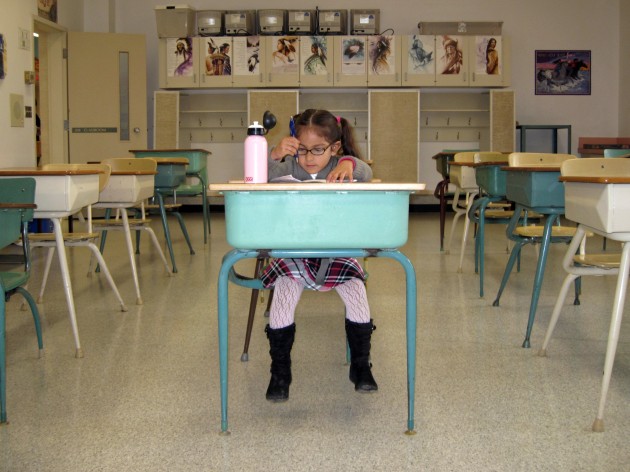Quality vs. Quantity and Other Tips to Help Your Child Learn a New Language
Studies show that we are all born with the innate ability to learn any language in the world and, as long as children learn the language before hitting puberty, they should speak it with a native accent.
Statistics like these are often the driving point behind parents enrolling their children in foreign language classes at a younger and younger age.
Shows like “Dora the Explorer” and “Ni Hao Kai-lan” have also made language learning more available to young children and it seems that these days the younger kids are when they start, the better. Although it may seem like a stellar idea to have your child learn as many languages as possible before they hit the age of twelve, overwhelming them with the pressures of language study may not be the best way to go about it.
 So before enrolling your tiny tot in a slew of language classes, check out these tips to how language learning can be the most beneficial not only to your child, but to you as well!
So before enrolling your tiny tot in a slew of language classes, check out these tips to how language learning can be the most beneficial not only to your child, but to you as well!
Inarticulate vs. Fluent
You may be under the impression that fluency on your part is necessary if you want to have an active role in your child’s learning process. And if you can’t afford to hire a language tutor for your youngster, you might see yourself reluctantly giving up on the idea of your child being able to learn another language. The good news is that this is not true! Experts say that the most important qualities a parent must have if they want to help in their child’s language learning is a willingness to learn alongside the tiny tot and be interactive throughout the progression. Playing online word games with your child or engaging in reading simple books with them (in the language of your choice) is a perfect child/parent pastime which can benefit you both. This way, your kiddo isn’t the only one learning and the both of you can work towards speaking a new language together!
Foundation vs. Selection
When it comes to selecting which language your kid should be learning, you may decide to make a random choice depending on what languages will remain vital throughout the next 50 years. However, when making your decision it’s always a good idea to consider which languages will make acquiring new ones later on, and even as an adult, easier. For example, if your child learns to communicate fluently in Spanish (one of the top three influential languages to know), they will already have the perfect foundation to easily learn French and Portuguese – both of which are becoming increasingly important in the business world. In the same vein, knowing Mandarin will give your child a head start when learning Cantonese or even Japanese! The possibilities are endless when you choose the right foundation.
Quantity vs. Quality
A frequent theory when it comes to teaching young ones a new language is that bombarding them with large chunks of vocabulary will result in more retention and a faster learning pace. However, studies show that the quality of language use is always more important than the quantity. This means that instead of speaking to children with a wide-range vocabulary, it’s best to carry out simple interactive conversations using daily props. Simple phrases like “There’s the bus!” and “Do you want a glass of water?” will create a stronger link in your child’s mind, making them a better conversationalist as they grow older as opposed to someone who can spout long lists of vocabulary.
Getting your child started on the language journey young is an admirable goal, but don’t let yourself get left behind as your young one progresses towards fluency. Not only does rekindling language learning as an adult have multiple benefits, but you are never too old to start setting new language goals!
Language Trainers’ excellent classes will make language learning a breeze and help you to achieve your own personal language objectives, regardless of your age, and free online placement tests are another free, and fun, tool to help keep you on your toes throughout the process. With these amazing resources, you’ll be more than ready to progress side by side with your tot through the wonderful world of foreign language study!


